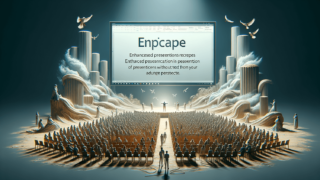
When it comes to presenting information effectively, the right file format can make all the difference. In Microsoft PowerPoint, one versatile but somewhat lesser-known format is the ODP file. This blog explores the ODP file extension, shedding light on its functionality and advantages in presentation scenarios.
Category: PowerPoint File Types
What is an ODP file in PowerPoint?
An ODP file is an OpenDocument Presentation file used primarily for presentations in software like Microsoft PowerPoint and compatible open-source alternatives such as LibreOffice and Apache OpenOffice. This file format is XML-based, which means it is inherently open and accessible, designed to be an open standard for spreadsheets, charts, presentations, and word processing documents.
ODP File Characteristics
ODP files stand out due to their compatibility and open-standard format, which ensures that presentations are accessible across different software platforms. Unlike the proprietary PPTX format used by Microsoft PowerPoint, ODP files are developed by multiple vendors under the OASIS consortium. This diverse support helps reduce issues related to proprietary formats and enhances long-term accessibility of content.
How to Create an ODP File
To create an ODP file in PowerPoint:
- Open Microsoft PowerPoint.
- Click on File > Save As.
- Choose the location where you want to save the file.
- In the Save as type dropdown menu, select ODP Format (*.odp).
- Click Save.
Opening an ODP File
Opening an ODP file in Microsoft PowerPoint is straightforward:
- Launch PowerPoint.
- Go to File > Open.
- Browse to select the ODP file and click Open.
You can also open ODP files in other software like LibreOffice Impress or Apache OpenOffice Impress. Compatibility issues are minimal, but some advanced formatting might not always transfer perfectly across different software.
Use Cases
ODP files are ideal for scenarios where file accessibility and software independence are critical. They are particularly useful in collaborative environments where participants may use different types of software to view presentations. Additionally, ODP files are beneficial in educational settings due to their open-source nature.
Advantages and Limitations
The major benefit of using ODP files is their compatibility across different platforms and software, ensuring that presentations are accessible to anyone using open-source software. However, limitations include potential loss of intricate formatting and transitions specific to PowerPoint when the file is opened in non-Microsoft software.
Converting To and From ODP
Converting from ODP to other formats like PPTX or converting presentations from PPTX to ODP can usually be done through the Save As feature in most presentation software. While converting, be mindful of potential loss of animations or advanced formatting.
Best Practices
When working with ODP files, always ensure to:
- Check compatibility of the presentations across different software.
- Use simple and universally compatible formatting to minimize loss during conversions.
Troubleshooting Common Issues
Issues such as formatting loss or broken animations can occur with ODP files, particularly when opening them in non-original software. Typically, simplifying the format and reducing reliance on complex animations can mitigate these issues.
Compatibility
ODP files are generally compatible across various versions of Microsoft PowerPoint and other presentation software. Issues might arise primarily with animations and some advanced features.
Conclusion
The ODP file format offers a flexible and open-standard alternative for creating and sharing presentations. By understanding and utilizing this format effectively, users can enhance their ability to collaborate and make their presentations accessible in varied software environments. We encourage you at LearnPowerPoint.io to experiment with this format in your next PowerPoint project.
Featured Posts
- No pillar pages found.








